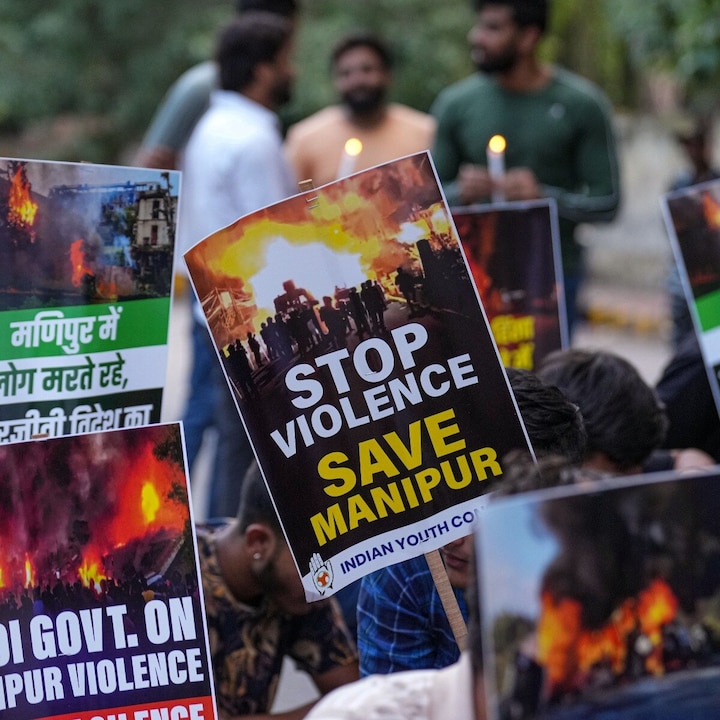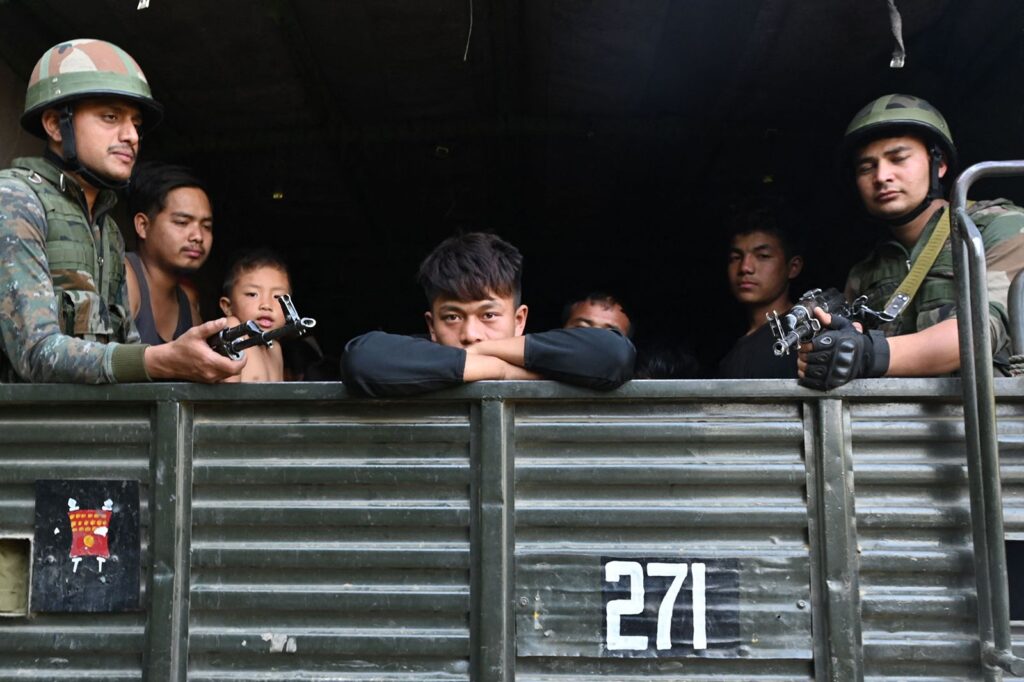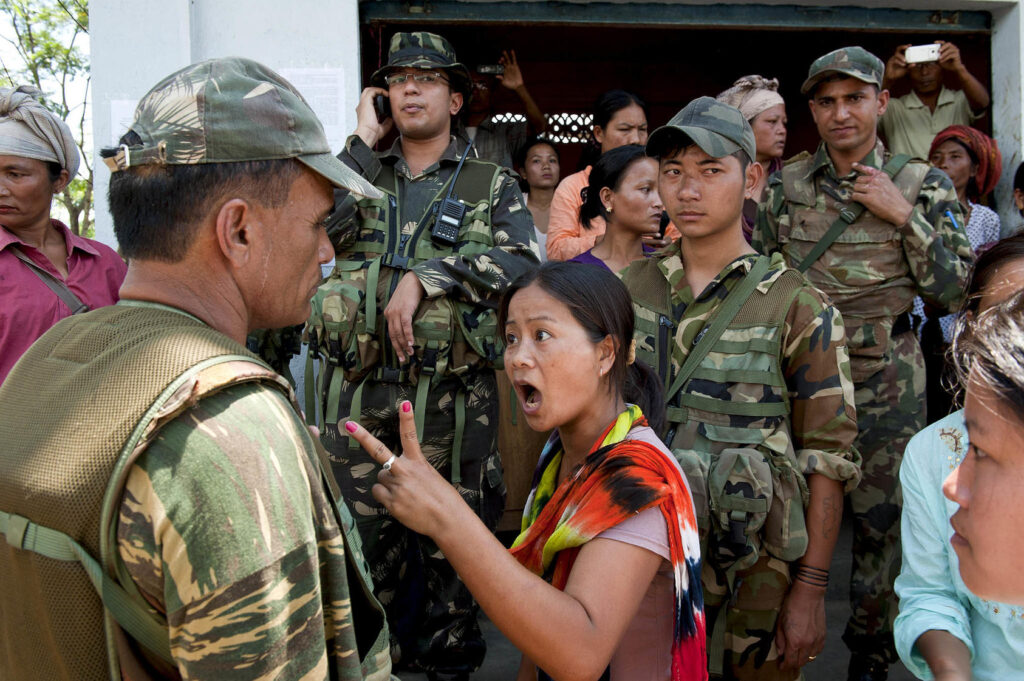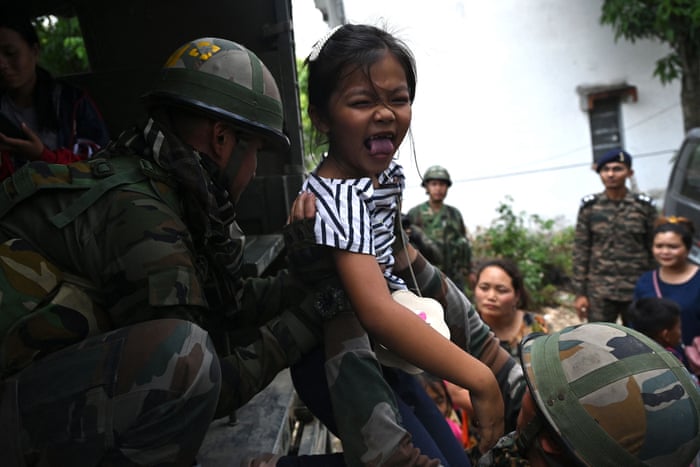The 2023 manipur violence is the latest chapter in this tumultuous history, underscoring the need for a comprehensive understanding of the region’s issues. This blog post aims to delve into the historical roots, present scenario, and future pathways of the Manipur violence, shedding light on every aspect that directly or indirectly influences the conflict.

Historical Background of Manipur
Table of Contents
TogglePre-Colonial Era
Manipur’s history dates back to ancient times when it was an independent kingdom with a distinct cultural identity. The region was home to various tribal communities, each with its unique customs and traditions. The Meitei community, primarily settled in the Imphal Valley, played a central role in the kingdom’s administration, while hill tribes like the Nagas and Kukis inhabited the surrounding hills. These communities coexisted, albeit with occasional conflicts over resources and territory.
Colonial Era
The arrival of the British in the early 19th century marked a significant turning point in Manipur’s history. The British annexed Manipur in 1891, incorporating it into their colonial administration. This period saw the imposition of new administrative structures and policies that disrupted traditional governance and inter-tribal relations. The British also introduced Christianity to the hill tribes, further altering the social fabric. Despite these changes, Manipur maintained a degree of autonomy and continued to be a center of resistance against colonial rule, contributing to the broader Indian freedom struggle.
Post-Independence Integration
Following India’s independence in 1947, Manipur faced a new set of challenges. The state’s accession to India in 1949 was met with resistance from sections of the population who feared loss of autonomy. The subsequent formation of Manipur as a Union Territory in 1956, and later as a full-fledged state in 1972, did little to quell the discontent. The early signs of ethnic tensions and insurgency began to surface, setting the stage for future conflicts.
Ethnic Composition and Dynamics
Manipur’s ethnic composition is a complex tapestry of various communities, each with its distinct identity and aspirations. The Meiteis, who are predominantly Hindu and reside in the Imphal Valley, form the majority community. The Nagas, primarily Christian, and the Kukis, with diverse religious affiliations, inhabit the surrounding hill districts. These groups have historically had a contentious relationship, often competing for political power, land, and resources. The desire for greater autonomy and recognition has fueled ethnic nationalism, leading to frequent clashes and a fragmented socio-political landscape. We can differentiate it in following ways
Insurgency and Armed Groups
The insurgency in Manipur traces its origins to the 1960s and 1970s when several armed groups emerged, advocating for independence or greater autonomy. Prominent among these are the United National Liberation Front (UNLF) and the People’s Liberation Army (PLA). These groups were driven by a mix of ideological, ethnic, and socio-economic motivations. Over the decades, the insurgency has led to significant violence, impacting civilians and stalling development. The presence of numerous armed groups, each with its agenda, has made peace negotiations complex and challenging.
Political Factors
Political dynamics in Manipur have often been marred by governance issues and administrative inefficiency. Corruption and lack of accountability within the political system have eroded public trust. The central and state governments have struggled to manage the conflict effectively, often resorting to heavy-handed measures that have further alienated the population. The Armed Forces Special Powers Act (AFSPA), in place since 1958, has been particularly controversial, with allegations of human rights violations by security forces adding fuel to the fire.
Socio-Economic Factors
Economic backwardness and lack of development are critical factors contributing to the unrest in Manipur. The state’s remote location, coupled with inadequate infrastructure, has hindered economic growth. High unemployment rates and widespread poverty have left many youths vulnerable to recruitment by insurgent groups. Additionally, the region’s strategic location has made it a hub for drug trafficking and smuggling, further exacerbating the violence. These socio-economic issues have created a vicious cycle of poverty and violence that is hard to break.

Key Events and Triggers of 2023 manipur violence
Naga-Kuki Clashes in the 1990s
One of the significant events that marked the escalation of violence in Manipur was the Naga-Kuki clashes in the early 1990s. These clashes were driven by territorial disputes and ethnic rivalries, leading to widespread violence and displacement. The conflict left a lasting impact on inter-community relations, creating deep-seated mistrust and animosity.
Manorama Devi Incident in 2004
The killing of Thangjam Manorama Devi by the Assam Rifles in 2004 was another critical trigger for violence. Accused of being a member of an insurgent group, her death sparked massive protests against the AFSPA and the alleged impunity of security forces. The incident highlighted the human rights issues in the region and intensified calls for the repeal of AFSPA.
Recent Incidents Reigniting Violence
The 2023 Manipur violence is the most recent flare-up, triggered by complex socio-political factors. Specific incidents, such as inter-ethnic clashes and controversial government policies, have reignited the violence, leading to significant casualties and displacement. Understanding these triggers is essential to addressing the root causes of the conflict.
Present scenario & impact in society
The current state of violence in Manipur is marked by sporadic clashes and a heavy military presence. The AFSPA remains in force, allowing security forces to operate with broad powers. While intended to curb insurgency, this act has often been criticized for leading to human rights abuses and further alienating the local population. The violence has also drawn international attention, with media coverage highlighting the plight of civilians caught in the crossfire. Despite efforts at peace negotiations, a lasting resolution remains elusive.
The ongoing violence has had a profound impact on Manipur’s society. Displacement and a refugee crisis have forced thousands to flee their homes, creating a humanitarian challenge. The psychological trauma of living in a conflict zone has taken a toll on the mental health of residents, particularly children. The disruption of education and healthcare services has further compounded the suffering. Women and children are particularly vulnerable, facing increased risks of exploitation and violence. The social fabric of Manipur has been severely strained, with long-term implications for community cohesion and development.

The role of civil society and NGOs
Amidst the turmoil, civil society and NGOs have played a crucial role in peacebuilding and conflict resolution. Local and national NGOs have been instrumental in providing humanitarian aid, advocating for human rights, and facilitating dialogue between conflicting groups. Community initiatives aimed at promoting understanding and reconciliation have shown promising results. However, these efforts often face significant challenges, including limited resources and resistance from entrenched interests. The contributions of civil society highlight the potential for grassroots solutions to complement governmental efforts in achieving lasting peace.
Goverment response
The central and state governments have implemented various policies and measures to address the violence in Manipur. These include military operations to combat insurgency, development projects to spur economic growth, and peace accords with insurgent groups. However, these responses have often been criticized for being reactive rather than proactive. Peace accords have frequently broken down, and development initiatives have struggled to reach the most affected areas. A more holistic approach, addressing both immediate security concerns and underlying socio-economic issues, is needed to create a sustainable resolution.

Future Pathways
Economic Development and Job Creation
One of the critical pathways to resolving the conflict in Manipur is through economic development and job creation. Investment in infrastructure, education, and healthcare can provide much-needed employment opportunities and improve living standards. Special economic zones and industrial projects tailored to the region’s unique strengths can stimulate growth. Ensuring that development benefits all communities equitably is essential to reducing economic disparities that fuel resentment and violence.
Educational Reforms and Skill Development Programs
Education is a powerful tool for peacebuilding. Implementing educational reforms and skill development programs can empower the youth, making them less susceptible to insurgent recruitment. Vocational training and entrepreneurship programs can provide alternative livelihoods, fostering self-reliance and economic independence. Promoting education that emphasizes peace, tolerance, and community cohesion can help bridge ethnic divides and build a more inclusive society.
Strengthening Local Governance and Accountability
Improving governance and accountability is crucial to restoring public trust in the political system. Strengthening local governance structures, including empowering traditional institutions, can enhance community participation in decision-making. Anti-corruption measures and transparency initiatives can address the systemic issues that undermine governance. Building a robust legal framework that ensures justice and protects human rights is essential for long-term stability.
Dialogue and Reconciliation
A sustainable peace process requires dialogue and reconciliation between conflicting groups. Inclusive peace talks that involve all stakeholders, including civil society, community leaders, and insurgent groups, are essential. Trust-building measures, such as confidence-building activities and joint development projects, can foster cooperation. Recognizing and addressing historical grievances can pave the way for lasting reconciliation.
National and International Support
National and international support can play a vital role in resolving the Manipur conflict. The Indian government must commit to a comprehensive strategy that addresses security, development, and human rights. International organizations and neighboring countries can provide valuable assistance, including technical expertise, funding, and diplomatic support. A coordinated approach that leverages national and international resources can enhance the effectiveness of peacebuilding efforts.
Conclusion
The 2023 Manipur violence is a stark reminder of the region’s deep-seated issues and the need for a multifaceted approach to conflict resolution. By understanding the historical roots, present scenario, and potential future pathways, we can develop a more informed and compassionate response to the crisis. Achieving lasting peace in Manipur requires concerted effort from all stakeholders, including the government, civil society, and the international community. While the challenges are significant, the resilience and determination of the people of Manipur offer hope for a brighter future.

FAQs
What are the main causes of the 2023 Manipur violence?
The 2023 Manipur violence is driven by a complex interplay of historical grievances, ethnic tensions, socio-economic disparities, and political factors. Specific incidents, such as inter-ethnic clashes and controversial government policies, have reignited the conflict.
How has the insurgency affected everyday life in Manipur?
The insurgency has had a profound impact on everyday life in Manipur, leading to displacement, psychological trauma, disruption of education and healthcare services, and increased vulnerability for women and children. The constant threat of violence and presence of armed groups have created a pervasive sense of insecurity.
What steps can the government take to ensure lasting peace in the region?
The government can ensure lasting peace by adopting a holistic approach that includes economic development, educational reforms, strengthening local governance, and promoting dialogue and reconciliation. Addressing human rights concerns and ensuring accountability are also crucial.
How can individuals contribute to peace efforts in Manipur?
Individuals can contribute to peace efforts by participating in community initiatives, supporting NGOs working on peacebuilding, advocating for human rights, and promoting understanding and tolerance among different ethnic groups. Engaging in constructive dialogue and fostering a sense of shared identity can also help.
What role do NGOs play in addressing the Manipur conflict?
NGOs play a vital role in addressing the Manipur conflict by providing humanitarian aid, advocating for human rights, facilitating dialogue, and implementing peacebuilding initiatives. They act as a bridge between communities and the government, helping to address the root causes of the conflict and promote
Reference
Books and Academic Papers:
- Conflict and Peacebuilding in Manipur: Insights from the Field” by L. John Singh.
- “Insurgency in India’s Northeast: The Role of External Forces” by Subir Bhaumik.
- “Ethnic Identity and Political Mobilization in Northeast India” by Sanjib Baruah.
Government Reports:
- Ministry of Home Affairs, Government of India. (2023). Annual Report on Internal Security.Manipur State Government. (2023).
- Report on the Current Situation in Manipur.
NGO Reports:
- Amnesty International. (2023). Human Rights Violations in Manipur: An Overview.
- Human Rights Watch. (2023). Manipuri Insurgency: Causes, Consequences, and Responses
News Articles:
- BBC News. (2023). “Manipur Violence: Historical Context and Current Scenario.” Retrieved from BBC NewsThe Hindu. (2023).
- “The 2023 Manipur Conflict: An Analysis.” Retrieved from The HinduAl Jazeera. (2023).
- “Understanding the Manipur Violence in 2023.” Retrieved from Al Jazeera
